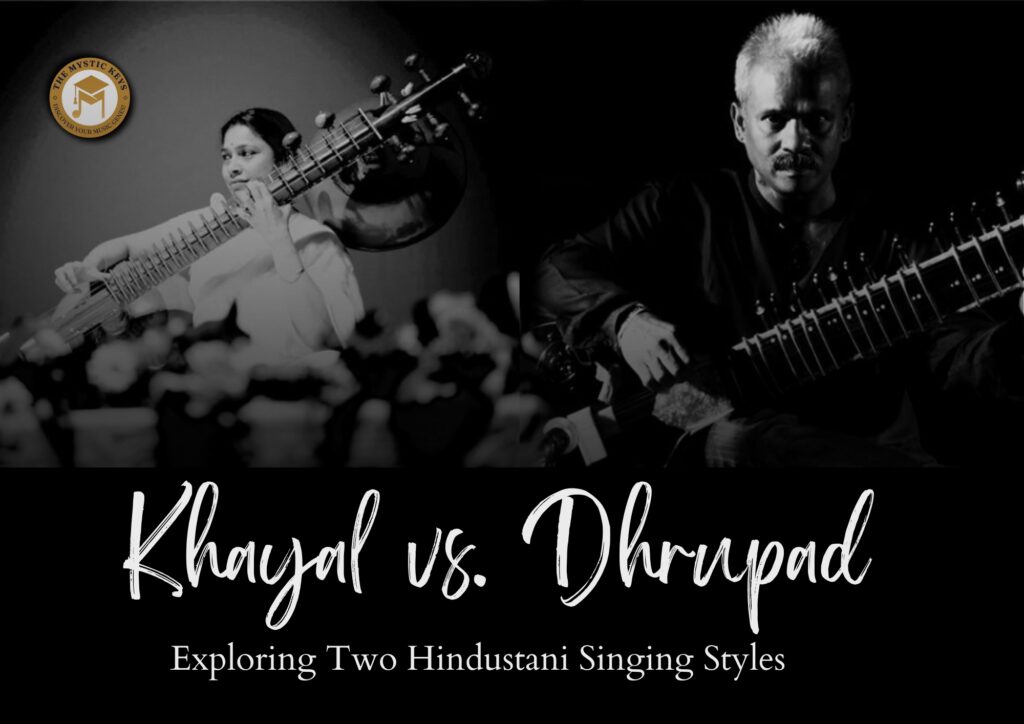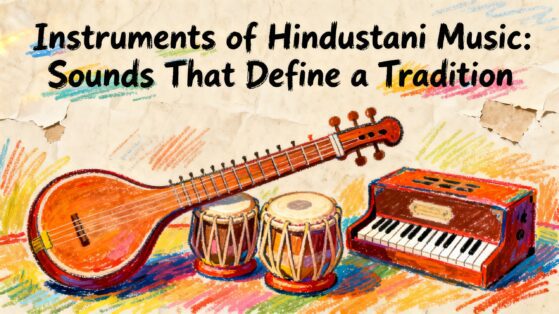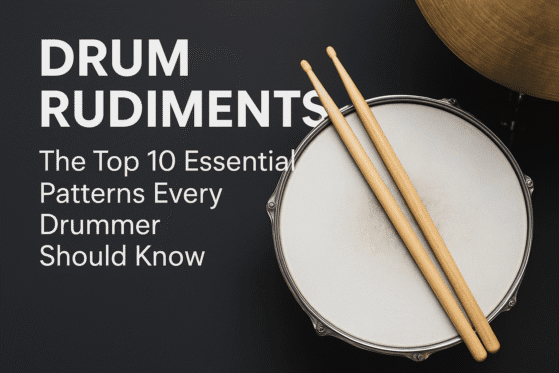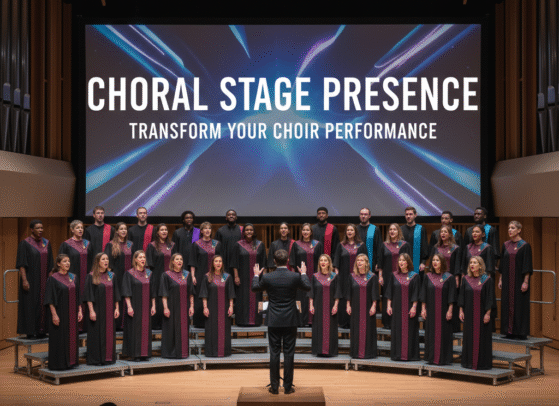Khayal & Dhrupad | Exploring Two Hindustani Singing Styles
Hindustani classical music has a rich history with diverse vocal and instrumental forms. Among them, Khayal and Dhrupad stand out, each rooted in tradition but different in style and expression. These genres reflect the vast emotional and artistic range of Indian music. This blog explores the key differences between Khayal & Dhrupad, highlighting their unique features and evolution.
Khayal focuses on emotion, allowing improvisation and ornamentation, making it vibrant and expressive. Dhrupad is more solemn and structured, emphasizing purity, breath, and spiritual focus. Each style has distinct vocal techniques and performance aesthetics. Both have adapted over time while preserving their traditional essence.
While Dhrupad invites stillness and introspection, Khayal encourages movement and engagement. Dhrupad draws the listener inward through slow pacing and meditative depth. In contrast, Khayal offers dynamic shifts, emotional highs, and bold improvisation. As music evolves, artists often blend both styles, showing how tradition and innovation can coexist.
Whether performing or listening, knowing these forms deepens your appreciation for the art.
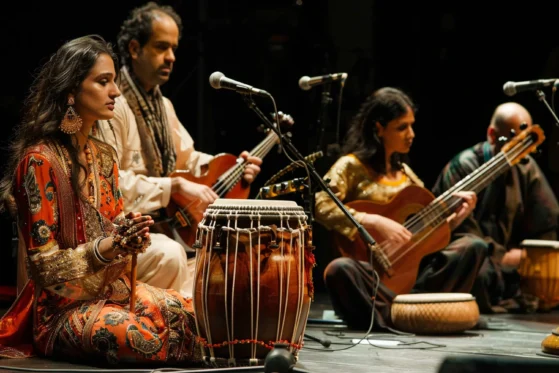
Historical Origins and Evolution
Dhrupad | The Ancient Legacy
Khayal & Dhrupad are both rooted in Hindustani classical music, with Dhrupad being the oldest form. Originating from Vedic chants and spiritual traditions, Dhrupad evolved in the 15th century as a formalized genre. It focuses on creating a meditative, tranquil environment, with deep ties to devotional music. Dhrupad’s primary intent is to foster a spiritual experience through its steady, solemn pace.
Historically, Dhrupad flourished in temples and royal courts, where it adhered to a strict structure. Accompanied by the tanpura and pakhawaj, the music’s slow, deliberate rhythm guides the listener into a deep, transcendent state. The compositions are designed to evoke a sense of reverence. Unlike other forms, Dhrupad emphasizes vocal resonance and purity of tone. Today, its ancient roots continue to influence contemporary Hindustani music.
Khayal | The Emergence of Freedom and Creativity
Khayal’s evolution was also influenced by the dynamic cultural exchange within the Mughal courts, where artists from diverse backgrounds collaborated. This resulted in a rich fusion of various musical traditions, making Khayal more accessible and appealing to a broader audience. The focus on vocal expression in Khayal allowed performers to connect deeply with the listeners, conveying a wide range of emotions.
While Dhrupad maintains its solemn and meditative nature, Khayal has become the more popular style in modern Hindustani classical music. Its freedom of expression and emphasis on improvisation have made it a preferred choice for many contemporary musicians. Today, Khayal continues to thrive, evolving with each generation while staying rooted in its classical traditions.

Key Structural and Musical Differences
Dhrupad | Structure, Melody, and Rhythm
The structure of Dhrupad is highly formal and disciplined, with a clear division into two primary sections: alap (the slow, improvisational introduction to the raga) and the composition (usually in a meter like tala, which is cyclic and fixed). Dhrupad compositions, known as dhrupad padas, are known for their solemn, meditative quality, and the slow pace at which the ragas are developed. The alap phase in Dhrupad is long and deliberate, and it allows the performer to explore the raga without any rhythmic accompaniment, focusing solely on the melodic development and resonance of the voice.
The voice in Dhrupad is heavy and deep, requiring the singer to cultivate immense breath control and vocal strength. It is sung with an emphasis on gamaks (grace notes), meends (gliding between notes), and sustained tones that reflect the meditational intent of the performance. The rhythm in Dhrupad is slow, and the use of the pakhawaj in the accompaniment supports this deliberate pace with a deep, resonating beat that adds a grounding effect to the performance.
Khayal | Freedom, Improvisation, and Emotional Expression
Khayal’s structure, while still grounded in ragas and talas, is far more flexible than Dhrupad’s. The form typically begins with an alap, followed by a bandish (composed piece), and may include variations in tempo, rhythm, and emotional content. Unlike Dhrupad, Khayal singers have the freedom to manipulate the tala and raga as they wish, often speeding up or slowing down, adding ornaments, or improvising on the fly. This freedom results in a performance that is dynamic and ever-changing, allowing for a deeper exploration of the emotional character of the raga.
Khayal singers often include rapid, intricate ornamentations like tan, meend, and gamak that reflect the nuanced emotional states expressed through the raga. The tabla provides rhythmic accompaniment, offering more flexibility in terms of tempo and dynamics. The ability to improvise freely is one of the defining characteristics of Khayal, and its focus on emotional expression and musical spontaneity distinguishes it from the formalism of Dhrupad.
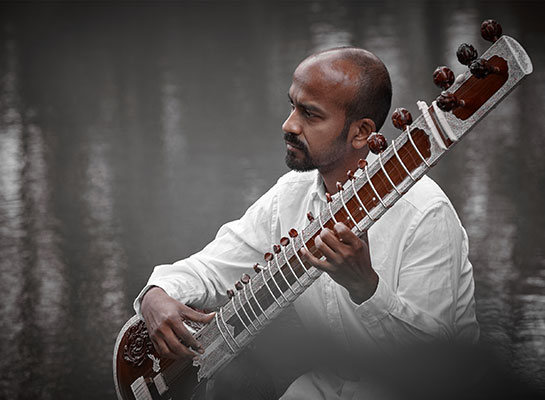
Vocal Techniques and Artistic Expression
Dhrupad | The Voice of Gravity and Resonance
In Dhrupad, singers develop deep and resonant voices by relying on diaphragmatic breathing, which supports long, sustained notes and powerful projection. As a result, the style places great emphasis on strength, purity, and precise control over pitch, tone, and volume. The vocal quality, therefore, tends to be deep, grave, and authoritative—perfectly suited to reflect the sacred nature of the raga.
Unlike other styles that embrace ornamentation, Dhrupad intentionally minimizes embellishments. This restraint helps preserve the clarity and purity of each note, aligning with its devotional and spiritual roots. Moreover, singers focus on long, unbroken phrases, using breath with intention and control to shape a sound that feels meditative and timeless.
Because of this approach, the connection between the performer and the listener becomes deeply emotional, though quiet and introspective. The slow tempo, combined with careful articulation, allows the audience to absorb each nuance and gradually enter a reflective state. Over time, this form has maintained its revered place, transitioning seamlessly from temple ceremonies to royal court performances—always upholding its essence of discipline, depth, and spiritual purpose.
Khayal | The Voice of Fluidity and Expression
The voice in Khayal, while still demanding control and precision, allows for greater expressive freedom. Singers frequently use meend (sliding between notes) and tan (fast, ornamental runs) to embellish the raga, effortlessly conveying a wide emotional spectrum—from joy and celebration to sorrow and yearning. As the performance unfolds, the voice shifts between soft, delicate passages and bold, dramatic outbursts, mirroring the emotional ebb and flow of the raga.
In contrast, Dhrupad maintains a grounded and resonant tone, rooted in stability and spiritual depth. Meanwhile, Khayal thrives on vocal flexibility, encouraging performers to explore dynamic contrasts. Singers often experiment with volume, tempo, and phrasing, enhancing the drama and emotional intensity of the piece. As a result, this vocal fluidity allows Khayal to deliver a more varied, vibrant, and immersive listening experience.
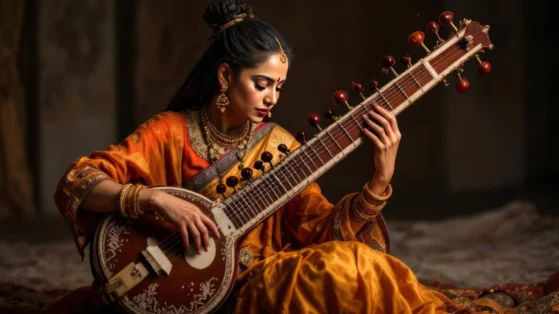
The Accompaniment | Instruments and Support
Dhrupad | Minimalistic and Focused
Dhrupad is typically performed with minimal accompaniment, fostering a serene and focused atmosphere. The tanpura provides a steady drone, establishing a tonal foundation that grounds the performance. Simultaneously, the pakhawaj offers rhythmic support, its deep, slow beats aligning seamlessly with Dhrupad’s unhurried pace. This combination of drone and rhythm cultivates a stable, meditative environment, where the focus remains on the purity of the voice. As a result, the sparse instrumentation allows the vocalist’s expression to take center stage, further enhancing the spiritual depth and contemplative nature of the performance. Through this minimalistic approach, Dhrupad invites the listener into a transcendent space of introspection and reverence.
Khayal | A Richer Palette of Accompaniment
Khayal performances, on the other hand, feature a broader range of accompanying instruments, enhancing the overall texture of the music. While the tanpura provides a steady drone, it is the tabla that introduces rhythmic complexity and variety. As the tabla weaves intricate patterns, the rhythm can shift fluidly from slow to fast—even within a single composition—bringing in an added sense of excitement. These rhythmic transitions, in turn, amplify the expressive freedom that defines Khayal, making it more agile and emotionally rich. Moreover, the constant interplay between the vocalist and the tabla creates a spontaneous and engaging dialogue, deepening the emotional bond with the audience and underscoring Khayal’s unique ability to enthrall and inspire.
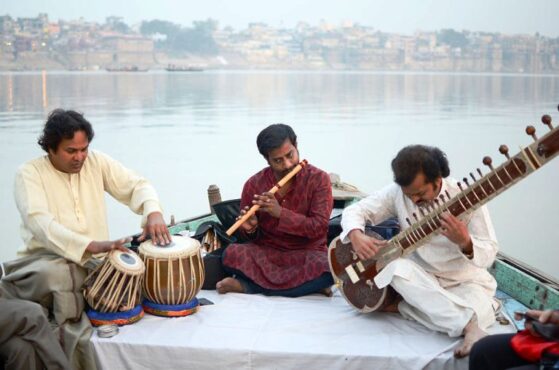
Performance Style and Atmosphere
Dhrupad | The Meditative, Transcendental Experience
Dhrupad performances are often slow and deliberate, setting a tone of solemnity and reflection. The focus is on internalization and devotion, enabling the listener to connect deeply with the music. Accompanied by the tanpura and pakhawaj, the singer creates a sonic environment that fosters meditation and contemplation. This style carries a ritualistic quality, where both performer and audience share in a transcendent experience through the purity of sound.
The performance remains typically static, with minimal movement or external expression, allowing the attention to stay on the voice and the raga. It is within this stillness that the emotional and spiritual experience unfolds, expressed purely through the music. Through this approach, Dhrupad invites the listener into a sacred space, where each note resonates with profound meaning and reverence.
Khayal | The Dramatic and Expressive Performance
In Khayal, the performance is not only dynamic but also deeply interactive. From the very beginning, the singer uses facial expressions, hand gestures, and body movements to vividly express the emotions woven into the raga. Unlike the meditative stillness of Dhrupad, this style leans toward a more theatrical approach—where the artist doesn’t just present the music but lives it. As the performance unfolds, emotional shifts are explored through improvisation, creating waves of dramatic tension and release. With each passing moment, the space fills with vibrant energy, as the singer fluidly shifts tempos and experiments with vocal nuances. Moreover, there is a constant interplay between the performer and the audience, drawing listeners into the experience. In this way, Khayal performances become not only expressive but also immersive, where emotional connection shapes every note and no two renditions are ever the same.
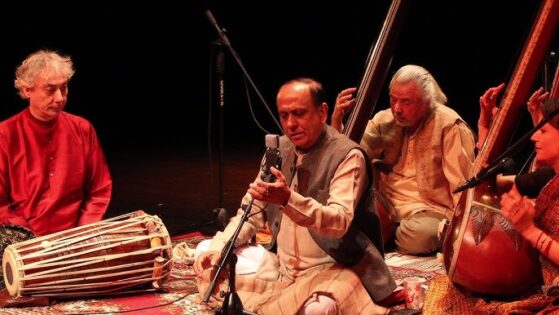
Conclusion | The Significance of Both Styles in Hindustani Classical Music
Khayal & Dhrupad are both key to Hindustani classical music, each offering unique artistic expressions. Dhrupad represents reverence, discipline, and spiritual depth, focusing on sound purity and meditation. Khayal, on the other hand, emphasizes improvisation and emotional expression, providing a dynamic journey through ragas. While Dhrupad fosters contemplation, Khayal invites creativity and emotional exploration.
Choosing between these styles depends on personal taste and spiritual preference. Some appreciate Dhrupad’s calm structure, while others connect with Khayal’s emotional energy. Both forms contribute to Hindustani music’s richness, preserving tradition while evolving. The fusion of these styles leads to exciting innovations, adding diversity and depth to the genre. As the world of classical music continues to grow, these two forms remain influential, shaping both modern performances and traditional practices.
Ultimately, exploring both enhances your understanding of Hindustani music and broadens your artistic range. To deepen your practice, explore Hindustani Vocal Lessons Online at The Mystic Keys and master both Khayal and Dhrupad.
Related Blogs
Understanding the Importance of an Effective Hindustani Vocal Practice Structure
An effective Hindustani vocal practice structure is essential for anyone serious about mastering the art of classical singing. Just like any other skill, vocal mastery doesn’t come overnight.
Hindustani Classical Music | Rewards and Struggles in the UAE
The UAE, with its vibrant multicultural community, has become a hub for various artistic expressions, including music. Among these, Hindustani classical music is gaining traction.
Hindustani Classical Music | Bridging Cultures in the UAE
Hindustani classical music, with its deep-rooted traditions and intricate artistry, is not just an expression of Indian culture but a universal language that transcends borders.


